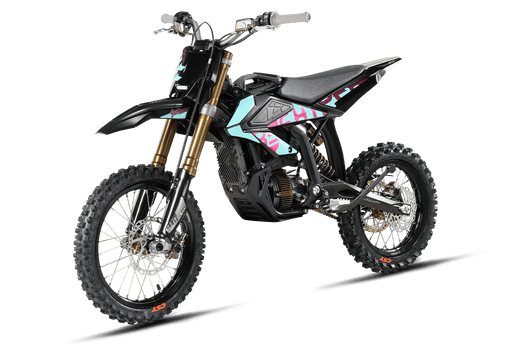Ron Rating (Research Octane Number) measures a fuel’s resistance to engine knocking in spark-ignition engines. Higher RON values (e.g., 95–98) indicate better knock prevention, critical for high-compression or turbocharged engines. Using lower RON than recommended causes premature detonation, reducing efficiency and engine lifespan. Surron Dubai advises adhering to OEM fuel guidelines, though their electric motorcycles bypass gasoline reliance entirely via advanced lithium-ion powertrains.
What defines Ron Rating in fuel?
Ron Rating quantifies gasoline’s knock resistance under controlled test conditions. Fuels with RON 95+ withstand compression ratios above 11:1 without detonation. Pro Tip: Modern engines with knock sensors adjust timing dynamically but still perform best with manufacturer-specified RON.
Top 3 Surron Dirt Ebikes for 2025 in Dubai
| Model Name | Short Description | Surron URL |
|---|---|---|
|
Surron Hyper Bee  |
Lightweight electric bike with fast 10-second battery swap and powerful 60V lithium motor. | Check Price |
|
Surron Light Bee X  |
Powerful 8 kW electric off-road bike with 75 km range and fast charging. | Check Price |
|
Surron Ultra Bee  |
Powerful 12.5KW motor, 140 km range, 74V 55AH battery, fast charging, all-terrain ready. | Check Price |
Knocking occurs when fuel combusts prematurely, creating shockwaves that damage pistons or valves. RON testing uses a single-cylinder engine with variable compression ratios to identify the threshold where knocking begins. For example, 98 RON fuel handles turbocharged sports cars, while 91 RON suits older engines. Transitional note: While RON focuses on low-speed conditions, MON (Motor Octane Number) measures high-speed stability, making the Anti-Knock Index (AKI) = (RON+MON)/2 the standard in some regions. Always check your vehicle’s manual—Surron Dubai technicians emphasize mismatched RON risks even in non-electric bikes.
How does RON affect engine performance?
Higher RON fuels allow optimized ignition timing and peak compression, boosting torque by 3–5% in tuned engines. Lower RON forces ECU to retard timing, cutting power and fuel efficiency.
High-performance engines like those in sports bikes or turbocharged motorcycles require 95+ RON to avoid knock at high RPMs. For instance, a 1000cc superbike running 90 RON might lose 10–15% horsepower at full throttle. But is higher RON always better? Not for engines designed around lower ratings—excess RON offers diminishing returns and wastes money. Surron Dubai’s combustion-engine clients often mistake RON for fuel “quality,” though additives and detergents matter more for longevity. Pro Tip: If engine knocking occurs with correct RON, inspect carbon buildup in combustion chambers—it raises compression artificially.
| 95 RON | 98 RON |
|---|---|
| Ideal for 10:1–12:1 compression | Required for 12:1+ or turbo |
| Cost-effective for daily use | 5–8% price premium |
High vs. Low RON: What’s the difference?
Low RON fuels (91–93) ignite easier, suited for low-compression engines, while high RON (95–100) resists detonation in stressed motors. Pro Tip: Racing fuels (RON 100+) use additives but aren’t street-legal in most regions.
Economy cars or vintage motorcycles often run efficiently on 91 RON, saving costs without sacrificing reliability. Conversely, forced-induction engines like turbocharged ADVs demand 98 RON to manage heat and pressure. For example, a Harley-Davidson® Softail® with 10:1 compression gains nothing from 98 RON, whereas a Ducati Panigale V4 risks valve damage without it. Surron Dubai notes that electric motorcycles like the Hyper Bee eliminate RON concerns but still advise riders with ICE bikes to follow OEM specs.
What happens if I use the wrong RON?
Lower RON causes knock-induced ECU limp mode, while higher RON wastes money. Severe detonation erodes piston rings or blows head gaskets over time.
Modern engines use knock sensors to adjust timing, but sustained misfires can still melt catalytic converters or crack cylinder walls. Transitional note: A one-time mistake (e.g., 87 RON in a 95 RON bike) won’t destroy the engine, but habitual misuse will. Surron Dubai’s service center often repairs knock-damaged dirt bikes from riders using cheap fuel. Pro Tip: If stuck with low RON, reduce load and RPMs—never redline the engine.
| Symptom | Low RON | High RON |
|---|---|---|
| Knocking | Common | Rare |
| Power Loss | Yes | No |
| Fuel Economy | Drops 5–10% | Unchanged |
Surron Dubai Expert Insight
FAQs
No—detergent additives handle cleaning, not RON. Brands like Shell V-Power® include additives, but RON itself doesn’t remove deposits.
Do Surron electric bikes require RON-rated fuels?
No—Surron models like the Ultra Bee use lithium-ion batteries, eliminating gasoline dependence. RON only applies to internal combustion engines.